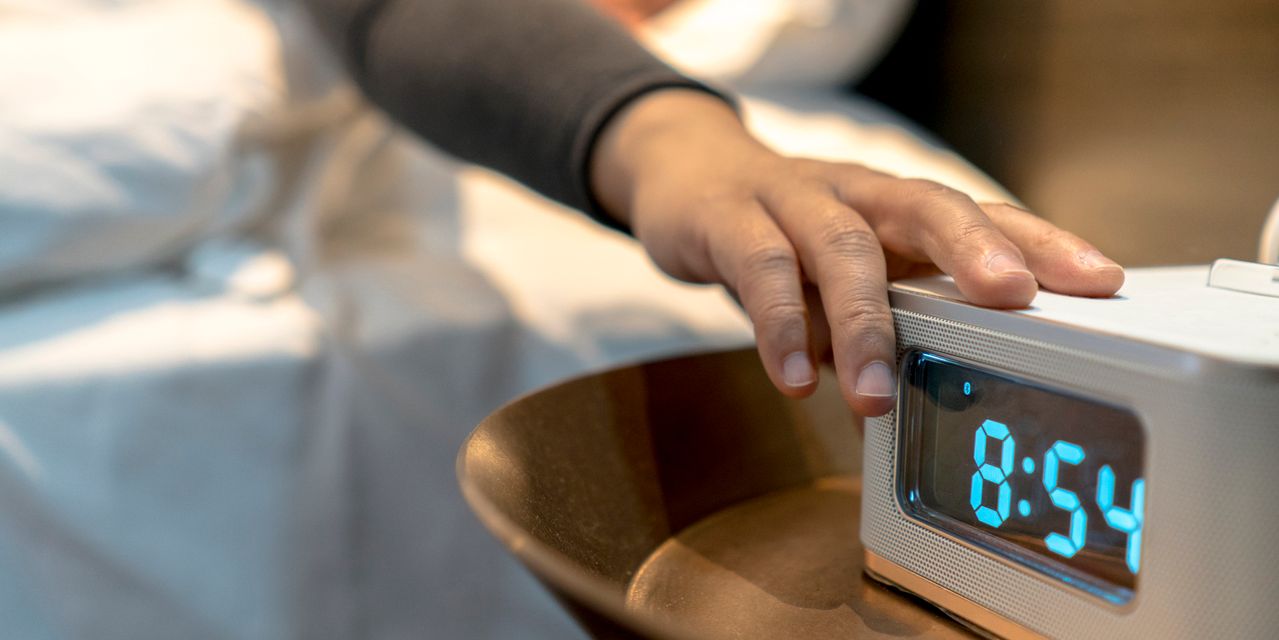U.S. daylight-saving time ends at 2 a.m. on Sunday, Nov. 5, which means that we’ll be turning our clocks back one hour to get more sunlight in the morning as the days get shorter heading into the winter.
The good news is that we can get an extra hour of sleep, since 2 a.m. becomes 1 a.m. in the wee hours of Sunday morning.
Read more: Daylight-saving time: When does the time change this weekend, and why?
“Falling back” by turning the clocks back an hour each autumn isn’t as disruptive to our internal body clocks as when we “spring forward” and lose an hour in March. But the time change can still be an adjustment — especially since so many of us are already sleep-deprived. And feeling fatigued can wreak havoc on our productivity at work, our decision-making, our mental health and even our sex lives.
Read more: 3 reasons to sleep more: avoid dementia, have great sex and become a better investor
And: People need more sleep in the winter, science says
“During clock changes, it is important to practice healthy sleep behaviors and maintain consistent sleep schedules in order to set yourself up for a smooth transition,” Dr. Joe Dzierzewski, the National Sleep Foundation’s vice president of research and scientific affairs, told MarketWatch.
Indeed, the National Sleep Foundation is one organization that wants to stop changing the clocks twice a year, and to instead stick to a permanent standard time (which is what we shift into when daylight-saving time ends this weekend). The National Sleep Foundation has also called for canceling the practice, and a bipartisan bill to make daylight-saving time permanent was put before Congress again last spring.
“Anytime we artificially alter the clock time, we run the risk of disrupting sleep,” Dzierzewski said. “Unfortunately, we see increased rates of heart attacks, car crashes and workplace injuries during daylight-saving time and in the days after a time change. Drowsy driving represents an immediate consequence of disrupted sleep.” Indeed, the NSF just released data this week showing that six in 10 drivers admit to having gotten behind the wheel a car when they were so tired they had a hard time keeping their eyes open.
So what can you do? Here are several tips from the National Sleep Foundation and the American Academy of Sleep Medicine to “fall back” a bit more easily this weekend — or to improve your sleep hygiene any time of year.
Turn your clocks back at bedtime on Saturday night
Get a head start on the time change by turning back any clocks, watches or appliances with timepieces that need to be manually set before you go to bed, since the time change occurs in the middle of the night at 2 a.m. This way, you’ll wake up on Sunday with the clocks all set to the right time. But most of your smart devices — like cellphones, smartwatches, computers, laptops and tablets — should automatically make the time change for you.
Go to bed at your usual time on Saturday — or even 15 minutes earlier
“One potential difficulty with the clock change could be not feeling sleepy at one’s usual bedtime, as it will feel an hour early,” Dzierzewski said. But even adjusting your bedtime by 15 minutes per day — especially in the days before the clock change (sorry that this tip may be hitting a little late!) is one way to plan for the clock change. Or in the days after turning the clocks back, just move up your bedtime by 15 minutes for a few days, then 30 minutes, and then 45 minutes, and you’ll be used to hitting the sack an hour earlier in no time.
Rise and shine
In the week after changing the clocks, make sure you get outside each day for some early-morning sunlight, which helps signal to your sleepy brain and body that it’s time to wake up. This will also help set your internal body clock to the new time. And it’s a good hack for becoming a morning person any time of year.
“Getting morning light exposure, which will be more likely following the return to standard time [after we turn the clocks back], is also beneficial for healthy sleep,” Dzierzewski said.
Consistency is key — including the Sunday after we turn the clocks back
If you don’t already, stick to a consistent sleep routine where you go to bed at the same time each night and wake up at the same time each morning — even on weekends or your days off. It’s better to take an afternoon cat nap to help relieve sleep debt (see the tips for smart napping below) than to disrupt your sleep routine by lying in for an extra hour or two on the weekends.
And that includes this weekend. Wake up at your usual time (like you would for work or school) on Sunday, rather than using the extra hour as an excuse to stay in bed longer. In fact, see if you feel any different (hopefully better) after getting that extra hour of sleep, which could inspire you to make a habit of getting some extra shuteye.
“Consistency is key to good sleep,” Dzierzewski said. “When we set the clocks back one hour, we are essentially gaining an hour of opportunity to sleep. However, opportunity does not always translate to actual sleep. One of the most important things that we can do is to stick to our regular, relaxing sleep routines.” Maybe this extra hour can be the beginning of a better sleep routine.
Nap — in moderation
If you’re really struggling in the days after the time change — or you’re suffering from sleep debt in general — then try taking an early-afternoon nap to recharge. But make sure those naps are never longer than 20 minutes at time, or else you can wake up feeling even groggier than you felt before. And keep naps before 3 p.m. so that they don’t interfere with your nighttime sleep.
Cut out these sleep killers
You’ve likely heard it before, but we’ll say it again: Avoid looking at screens, exercising, eating heavy meals or consuming alcohol and caffeine before bed. The screens are probably the most disruptive, however, so if you make one change, then put the devices away an hour before bedtime.
Instead, wind down with some self care and relaxation techniques, such as deep breathing and meditation, reading a book while having a cup of decaffeinated herbal tea, or listening to music. Or if you simply must use a device, be mindful about it; dim the brightness of your phone or tablet, and play white noise, chill music or a guided meditation instead of playing games or watching TikTok videos or reading social media newsfeeds that could get you amped up.
Read the full article here






